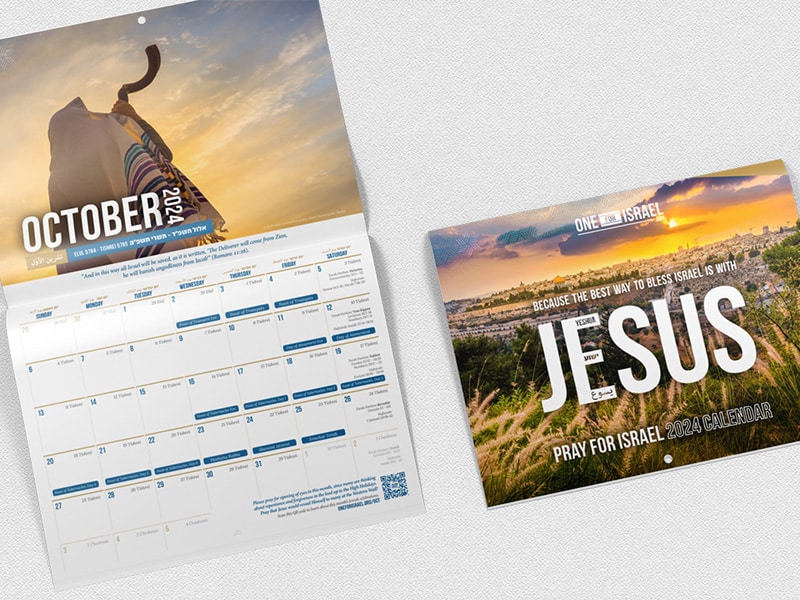Did you know that both the first temple, built by King Solomon, and the also Nehemiah’s second temple that Yeshua frequented, were both destroyed on the same date in the Jewish calendar? That date is called Tisha B’Av, which means the 9th of the month of Av, the fifth month in the Jewish calendar. And remarkably, archaeologists have just made some important discoveries related to the Babylonian destruction of the first temple in 586 BC!
Disovering the secrets of the City of David
Close to the hotly contested Temple Mount area, just to the south (a bit to the right of the picture above), is a finger of land like a miniature mountain ridge where King David first established Jerusalem. It is the hill that David and his troops climbed to attack the Jebusites 2 Samuel 5:
“So David made the stronghold of Zion (also called the City of David) his headquarters. Then, beginning at the old Millo section of the city, he built northward toward the present city center.”
Today this area is known as the “City of David”, and it is the focus of intensive archaeological excavation. They have already found many treasures: floor tiles from the second temple, an underground tunnel with stairs leading up to the temple, a bell that would have hung on the hem of a priest’s robe, seals from officials mentioned in Jeremiah, Yehucal son of Shelemiah and Gedaliah son of Pashhurand, of course Hezekiah’s tunnel, as described in 2 Kings 20:20. These were all found among the debris that was dumped when construction work was happening at the Temple Mount between 1996-1999.
The Times of Israel explains: “The Jerusalem Islamic Waqf, the institution overseeing the al-Aqsa Mosque compound, excavated a section of the Temple Mount for the building of a subterranean mosque in an area known as Solomon’s Stables. Tens of thousands of tons of dirt — roughly 400 truckloads — were excavated by heavy machinery, without the supervision of archaeologists, and were dumped outside the Old City.”[1]
The piles of earth sat in the Kidron Valley for over four years until the Temple Mount Sifting Project began to carefully examine the soil began in 2004. So far they have managed to go through more than 70% of the discarded debris.
But now, even as certain parties are in utter denial of Israel’s past, we have made another new discovery, related to the Babylonian destruction of Jerusalem over 2500 years ago.
We have well preserved evidence of the destruction that the Romans caused when they sacked Jerusalem in 70 AD, but thanks to a particular pottery design that can be identified to only a short window of time in history, we are now building a clearer picture of what happened when the Babylonians came to town.
There have been many pots found in the City of David with handles bearing the letters “למלך“, which means “For the King”. This seal has been found on handles of jars, dating from just before the Assyrian invasion in 701 BC onwards (the earliest one we have is from the time of Hezekiah’s reign in late 8th century BC [2]), but was later replaced with a rosette design on the handle instead. These rosette seals disappeared after the Babylonian destruction, meaning that they are only found in the period leading up to 586 BC.
Ortal Chalaf and Dr. Joe Uziel, Israel Antiquities Authority excavation directors explain:
“These seals are characteristic of the end of the First Temple Period and were used for the administrative system that developed towards the end of the Judean dynasty. Classifying objects facilitated controlling, overseeing, collecting, marketing and storing crop yields. The rosette, in essence, replaced the ‘For the King’ seal used by the previous administrative system.”[3]
The discovery of such jars has helped identify the age of layers of earth and debris, and was accompanied by other signs of destruction such as heaps of broken and burnt pottery, charred wood, along with other treasures, including a rare ivory statuette. They were surprised to find that this layer was not uniform in depth from place to place, with some areas being as much as a meter deep but barely traceable in other places. The working hypothesis is that the Babylonians burnt and trashed some buildings but not all of them. Dr Joe Uziel says, “The process may have been to destroy certain points they didn’t have to destroy every single building in order to destroy Jerusalem.”
Chalaf and Uziel tell us that, “The excavation’s findings unequivocally show that Jerusalem had spread outside of the city walls before its destruction. A row of structures currently under excavation appears beyond the city wall that constituted the eastern border of the city during this period. Throughout the Iron Age, Jerusalem underwent constant growth, expressed both in the construction of the city wall and the fact that the city later spread beyond it. Excavations carried out in the past in the area of the Jewish Quarter have shown how the growth of the community at the end of the 8th Century BCE caused the annexation of the western area of Jerusalem. In the current excavation, we may suggest that following the westward expansion of the city, structures were built outside of the wall’s border on the east as well.”[3]
Jerusalem was expanding, an affluent city at ease with itself, but not pleasing God.
Why did God allow his own temple get destroyed – twice?
In these days of struggle and contention over the Temple Mount, there is great indignation and fury because of the perceived holiness of the site. Both Muslims and Jews feel like it belongs to them and their religion, but of course, the very notion of holiness means dedicated to God. It’s God’s mountain – God’s place, where he has chosen to put his name. And he can do whatever he wants with it. When it became practically idolatrous leading up to the time of the Babylonian destruction, God sent his servant Jeremiah with these words for those who had developed a twisted view of what it means to rightly worship God:
“The word that came to Jeremiah from the Lord: “Stand in the gate of the Lord‘s house, and proclaim there this word, and say, Hear the word of the Lord, all you men of Judah who enter these gates to worship the Lord. Thus says the Lord of hosts, the God of Israel: Amend your ways and your deeds, and I will let you dwell in this place. Do not trust in these deceptive words: ‘This is the temple of the Lord, the temple of the Lord, the temple of the Lord.’ (Jeremiah 7:1-4)
God was willing to destroy his own holy city and the his own holy temple in order to bring about justice and righteousness – true holiness.
“For if you truly amend your ways and your deeds, if you truly execute justice one with another, if you do not oppress the sojourner, the fatherless, or the widow, or shed innocent blood in this place, and if you do not go after other gods to your own harm, then I will let you dwell in this place, in the land that I gave of old to your fathers forever.” (Jeremiah 7:5-7)
“These findings depict the affluence and character of Jerusalem, capital of the Judean Kingdom, and are mesmerizing proof of the city’s demise at the hands of the Babylonians.” (Israel Antiques Authority)
Israel may have been rich, but they had grown cold towards God and become riddled with social injustice. Jerusalem was and continues to be extremely important to God, as does his holy mountain, but our hearts are even more important to him. God did not shy away from sending the Babylonians to administer his harsh punishment. He is not interested in dead religion and empty duties, but commands us to love him with all our hearts and love our neighbours as ourselves. He cannot abide the oppression of those in need.
“Behold, you trust in deceptive words to no avail. Will you steal, murder, commit adultery, swear falsely, make offerings to Baal, and go after other gods that you have not known, and then come and stand before me in this house, which is called by my name, and say, ‘We are delivered!’—only to go on doing all these abominations? Has this house, which is called by my name, become a den of robbers in your eyes?“ (Jeremiah 7:8-12)
Isn’t it interesting that Yeshua quotes these very words of Jeremiah bringing down the same verdict on the second temple, not long before that too was destroyed in 70 CE?
However, Jeremiah also foretells not only the return from the Babylonian exile, but also the regathering of Israel from all the nations, which we are seeing in our days. God is a covenant keeping God. He has his plans and purposes for Jerusalem, and will one day come again and reign from his holy mountain.
These archaeological findings of the Babylonian destruction so close to Tisha B’Av are a stark reminder to us of God’s purposes, his faithfulness to his promises, and also his priorities of his heart.
[1] The Times of Israel, “Sifting for Temple Mount artifacts halts as funding dries up”, Ilan Ben Zion, April 3, 2017,
[2] HaAretz, “Archaeologists Find Destruction Left by Babylonian Conquest of Jerusalem”, Ruth Schuster, Jul 26, 2017
[3] Israel Antiques Authority, “Evidence of Babylonian Destruction of Jerusalem Found at the City of David”













